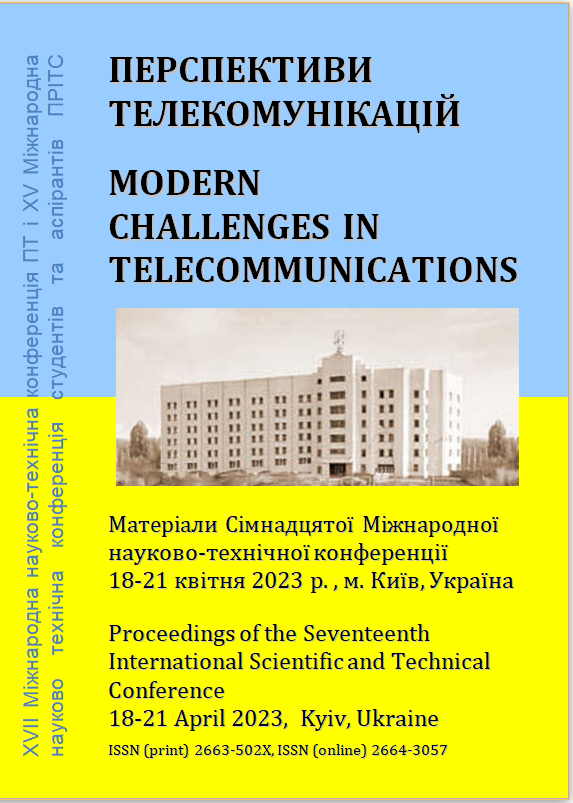ОСОБЛИВОСТІ ПОБУДОВИ РОЗПОДІЛЕНОЇ МЕРЕЖЕВОЇ ОПЕРАЦІЙНОЇ СИСТЕМИ ONOS
Анотація
У статті розглянуто розподілену мережеву операційну систему ONOS, що надає можливість програмного керування мережею, що забезпечує більш гнучкий та ефективний підхід до керування мережевими ресурсами. Проаналізовані ключові можливості ONOS, такі як: керування трафіком, обробка подій, моніторинг та аналіз мережевих даних, побудова мережевих топологій, управління мережевими сервісами.Посилання
This article discusses the ONOS distributed network operating system, which provides a software-defined approach to network management, enabling a more flexible and efficient approach to managing network resources. Key features of ONOS are analyzed, such as traffic management, event processing, monitoring and analysis of network data, network topology construction, and management of network services.
##submission.downloads##
Опубліковано
2023-06-17
Як цитувати
Нестеренко, М. М. ., Сколець, С. С. ., & Марінов, А. І. . (2023). ОСОБЛИВОСТІ ПОБУДОВИ РОЗПОДІЛЕНОЇ МЕРЕЖЕВОЇ ОПЕРАЦІЙНОЇ СИСТЕМИ ONOS. Збірник матеріалів Міжнародної науково-технічної конференції «ПЕРСПЕКТИВИ ТЕЛЕКОМУНІКАЦІЙ», 137–140. вилучено із https://conferenc-journal.its.kpi.ua/article/view/281497
Номер
Розділ
Мережні, оптоволоконні технології та безпек
Ліцензія

Ця робота ліцензується відповідно до Creative Commons Attribution 4.0 International License.
Authors who submit to this conference agree to the following terms:a) Authors retain copyright over their work, while allowing the conference to place this unpublished work under a Creative Commons Attribution License, which allows others to freely access, use, and share the work, with an acknowledgement of the work's authorship and its initial presentation at this conference.
b) Authors are able to waive the terms of the CC license and enter into separate, additional contractual arrangements for the non-exclusive distribution and subsequent publication of this work (e.g., publish a revised version in a journal, post it to an institutional repository or publish it in a book), with an acknowledgement of its initial presentation at this conference.
c) In addition, authors are encouraged to post and share their work online (e.g., in institutional repositories or on their website) at any point before and after the conference.

